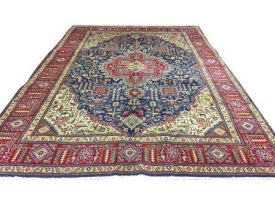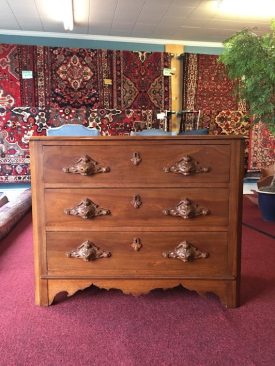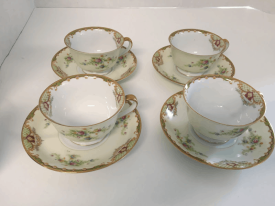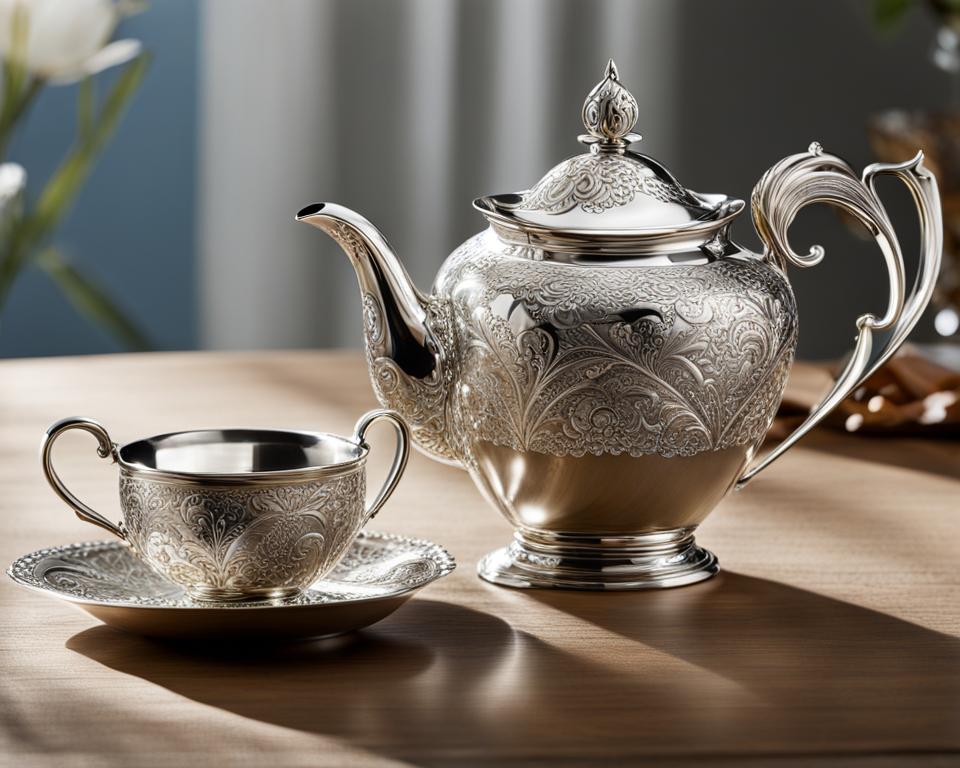Discover the joy and creativity in DIY furniture refinishing, an activity that not only breathes new life into your cherished pieces but also infuses your space with a unique essence of history and personality. This guide is crafted to inspire homeowners in their quest to transform aging tables, chairs, and dressers into vibrant, stylish, and functional pieces. From the rustic allure of restoring antique furniture to the satisfaction of a modern furniture makeover, the revival of your beloved items is just a few thoughtful touches away. Embrace the process of refinishing wood furniture and let the character of old wood once again tell its enchanting stories in your home.
Key Takeaways for Furniture Refinishing Success
- The right preparation is key in DIY furniture refinishing for lasting beauty.
- Enhance vintage treasures by restoring the original allure of antique furniture.
- Contemporary furniture makeover ideas can modernize and elevate outdated pieces.
- Refinishing wood furniture is both a creative and an environmentally conscious choice.
- Take pride in turning the old into new, fusing your personal taste with classic styles.
- Learn the satisfaction of working with your hands to rejuvenate beloved home fixtures.
Discovering the Potential of Old Furniture
Amid the modern throwaway culture, restoring old furniture serves as a poignant testament to quality and craftsmanship. The secret to unlocking the potential of a well-worn piece lies in distinguishing when it need only be refreshed or when it demands a full-scale restoration. It’s an artful journey—deciding whether to infuse new life into a timeworn treasure with vibrant colors or to reclaim its former essence.
The Charm of Vintage Pieces
Old furniture carries with it an air of history and personality, qualities that modern replicas strive to mimic but rarely match. A vintage piece, restored judiciously, can imbue any space with a sense of warmth and story. Recognizing the intrinsic appeal of these aged treasures is integral to successful furniture restoration. When refinishing old furniture, the goal is to enhance, not overshadow, the natural allure that age has bestowed upon these objects.
When to Refinish vs. Restore
Deciding between refinishing and full restoration pivots on the condition of the furniture and the desired outcome. Simple refinishing, perhaps with a contemporary coat of paint or a new staining, might suffice for pieces that are structurally sound yet aesthetically dated. To that end, employing furniture restoration tips to highlight rather than hide, the original character can be particularly effective. Conversely, restoring old furniture may involve meticulous care, especially when dealing with antiques where the aim is to preserve historical integrity. As such, each decision to refinish or restore brings with it the possibility of a stunning transformation, turning the overlooked into the cherished.
Evaluating the Condition of Your Furniture
When diving into the world of furniture makeover ideas, the process begins with a critical eye and a thorough assessment of your furniture’s current condition. Scrutinizing your piece allows you to determine the sort of care and creative touches necessary for a successful transformation. This not only shapes your strategy but also helps to preserve the underlying character that drew you to the furniture in the first place.
Assessment of the condition typically revolves around the identification of aesthetic blemishes and structural integrity. For instance, minor scratches and paint chipping may signal that a simple cosmetic update is due, while a wobbly frame or loose joints suggest more significant repair work is needed. With this knowledge, you can refinish or restore old furniture following the right techniques tailored to its specific needs.
| Degree of Damage | Cosmetic Update | Structural Repair |
|---|---|---|
| Minor Scratches | New Varnish or Paint | N/A |
| Worn Finish | Light Sanding and Repainting | N/A |
| Loose Joints | N/A | Glue and Clamp Technique |
| Broken Legs or Frames | N/A | Replacement or Reinforcement |
| Water Rings/Stains | Refinishing the Surface | N/A |
To give it a fresh look, you may consider less invasive methods, catering to preserving the furniture’s historical importance. If the piece has substantial historical or sentimental value, it’s prudent to opt for preservation rather than transformation. A refresh that maintains the original design and materials can be achieved with a soft touch and appropriate restoration techniques, preserving the essence that immortalizes the piece in time.
Remember, each piece of furniture tells a unique story and requires a tailored approach to bring out its best features while ensuring it fits harmoniously within your living space. With a proper evaluation, your cherished furnishings can be given a new lease of life, becoming both a functional part of your home and a testament to the timeless allure of quality craftsmanship.
Preparation: The First Step to Revamping Furniture
Embarking on the journey of DIY furniture refinishing or restoring antique furniture starts with a fundamental step: preparation. Proper preparation not only ensures the beauty of your furniture’s final appearance but also its longevity. Getting this phase right can mean the difference between a mediocre outcome and a stunning transformation. Before diving into the nitty-gritty of furniture refinishing techniques, let’s discuss how to set the stage for a successful furniture makeover.
Effective Cleaning Techniques
It may seem rudimentary, but removing accumulated dirt and grime is a critical task in furniture refinishing. Grime and oils can prevent new finishes from adhering correctly, which may lead to peeling or chipping over time. Arm yourself with mild soap and warm water, and use a soft cloth or sponge to gently clean the surface of your furniture. For those tougher spots, a small amount of mineral spirits can assist in breaking down the stubborn residue. Thorough drying is imperative after cleaning to prevent any moisture damage, especially on wood surfaces.
The Role of Sanding and Priming
After your piece is squeaky clean, assessing the need for sanding becomes your next task. Sanding smoothes out imperfections and provides a key for the new paint or finish to adhere to. Whether you’re dealing with a light scratches or preparing for a full repaint, an evenly sanded surface is essential. Depending on the furniture’s condition, you’ll need to choose between different grits of sandpaper—from rough for stripping away old finishes to fine for a smooth end-result.
Priming is like setting a primer on a canvas; it’s all about creating a uniform base that will enhance the appearance of your subsequent finishes. A good primer will not only provide a smooth surface but also block any stains that can seep through your new paint, especially when dealing with wood furniture. It’s an extra step, but one that contributes greatly to a professional-looking and durable finish.
As you navigate through the nuances of preparation, keep in mind that every stage—cleaning, sanding, priming—serves to elevate the quality of your furniture refinishing project. By committing to detailed prep work, you’re positioning yourself for success and satisfaction with your refreshed furniture pieces.
Choosing the Right Refinishing Technique
When it comes to breathing new life into old furniture, the right refinishing technique can make all the difference. Whether you’re drawn to the timeless quality of antiques or you’re seeking to infuse a contemporary edge into a vintage find, understanding the best approach to refinishing wood furniture is key. Here, we’ll delve into methods perfect for furniture restoration tips and tricks as well as strategies for restoring old furniture while retaining its storied charm.
Restoring Antique Charm
Antique furnishings carry with them a history that enhances any space. To honor this legacy, selecting a refinishing method that maintains the furniture’s historical integrity is imperative. Traditional techniques like hand-rubbed oils can bring out the warmth of the wood, while a carefully applied stain can rejuvenate faded areas without obscuring the furniture’s character. Consider the benefits of using milk paint to achieve that coveted chippy finish, which can add an authentic patina to your treasured piece.
Modern Approaches for a Fresh Look
In the quest for a more modern vibe, there are numerous contemporary refinishing techniques at your disposal. Embracing bold, statement colors can transform a dated piece into a modern showstopper. Techniques such as dry brushing add texture and depth, while distressing techniques can give the piece a lived-in look that still aligns with modern design tendencies. Remember, the goal of modern refinishing is not just to repaint but to create a finish that complements today’s interior design trends.
Staining vs. Painting: Finding the Perfect Finish
When it comes to refinishing old furniture, the choice between staining and painting is more than just a matter of color—it’s about achieving the right finish that complements the furniture’s character and the ambiance of your space. Staining preserves and highlights the beauty of wood grain, making it ideal for pieces where the quality of wood deserves to be at the forefront. If you’re undertaking a DIY furniture refinishing project with a prime vintage find, staining might just be the way to go.
However, painting offers a less transparent but equally impactful transformation, especially for pieces that are damaged or composed of lesser-quality wood. Paint covers up a multitude of imperfections, giving your furniture a smooth, concealing coat. With a broad spectrum of colors available, painting can cater to any design vision, from a modern, bold palette to a subtle, understated hue. Chalk paint, in particular, has become a favored choice among DIY enthusiasts for its ease of use and versatility.
- Staining: Best for enhancing natural wood beauty and details
- Painting: Ideal for achieving a wide variety of styles and hiding imperfections
- Chalk Paint: Offers a user-friendly, matte finish that’s perfect for creative effects
To truly personalize your refinishing wood furniture endeavor, consider combining both techniques. Applying a base stain can add depth and warmth, followed by strategically painted accents to accentuate details. This merging of techniques can yield a finish that is both unique and richly textured.
| Finish Quality | Benefits of Staining | Benefits of Painting |
|---|---|---|
| Wood Grain Visibility | Enhances and accentuates natural patterns | Creates a new surface for artistic expression |
| Suitability | Excellent for high-quality wood | More forgiving for less ideal wood condition |
| Finish Type | Translucent, showcases wood texture | Opaque, offers a consistent appearance |
| Customization | Allows for light to dark tones with natural look | Endless color possibilities and techniques |
Remember, whether you choose to stain or paint, the most crucial step in DIY furniture refinishing is to properly prepare the surface. This ensures that whichever finish you select, the end result will be both durable and beautiful, breath new life into your cherished furniture pieces.
The Art of Stripping Furniture Without Damage
Embarking on the journey of furniture refinishing techniques often starts with the need to strip old finishes. Yet, this critical first step poses the risk of harming the piece if done improperly. Fortunately, for enthusiasts pondering how can you refinish or restore old furniture to give it a fresh look, there are alternative methods to traditional stripping that safeguard the furniture’s integrity while effectively preparing it for its revival. These alternatives contribute not only to restoring old furniture but also to preserving its storied past.
Alternatives to Traditional Stripping Methods
Stripping furniture without damage hinges on finding a balance between effectiveness and delicacy. Rather than using harsh chemical strippers, you can apply more gentle solutions that clean and repair worn finishes. One popular method includes using mineral spirits to evaluate the state of the existing finish. A simple combination of soap and water can serve as the primary cleaning agent for general tidiness, lifting away years of dust and dirt without stripping the wood’s character.
For more stubborn issues like water stains, applying a lighter touch with petroleum jelly may provide the answer. This solution not only addresses superficial blemishes but also aids in preserving the patina that lends an aged piece its unique charm. By integrating these techniques into your refinishing process, you can revitalize a furniture piece while honoring its history—amplifying its beauty and ensuring it remains a focal point in your home for years to come.
How can you refinish or restore old furniture to give it a fresh look?
Embarking on a DIY furniture refinishing project blends the preservation of a piece’s history with the excitement of contemporary design. Many homeowners rediscover the joy in furniture makeover ideas that infuse personality and freshness into their living spaces. When it comes to restoring antique furniture, the goal is to honor the past while aligning the piece with modern home aesthetics. Meanwhile, refinishing wood furniture not only gives the item a second life but also customizes it to the owner’s evolving style preferences.
The journey to turning an antiquated piece into a trendy centerpiece starts with a good assessment. Determine what the furniture needs: is it a thorough clean, a sand-down, or a more in-depth repair? Then, follow it up by considering how you can seamlessly blend old charm with new trends. Here are some effective strategies to consider for your next revamp:
- **Paint Application**: A coat of vibrant paint can turn an old wardrobe into the highlight of a room, while neutral tones can help a worn-out table find new sophistication.
- **Hardware Updates**: Exchange outdated knobs and handles with sleek, modern alternatives to quickly shift the style period of your piece.
- **Unique Finishes**: Techniques such as decoupage provide a personalized touch, allowing the integration of patterned papers or fabric for a unique look.
Here is a guide to help you decide on the furniture finish that will best suit your project:
| Condition | Finish Type | Description | Best Used For |
|---|---|---|---|
| Good Wood, Antique | Stain | Preserves and enhances natural wood grain | Historical pieces deserving authenticity |
| Damaged Surface | Paint | Conceals imperfections, provides a wide color palette | Pieces with scratches, watermarks, or burn marks |
| Design Accent | Decoupage | Addition of paper patterns, sealed with varnish | Accent furniture pieces like side tables or drawers |
| Desire for Detail | Distressing | Strategically worn finish for a vintage feel | Shabby-chic decor and period pieces |
Restoring or refinishing your old furniture takes it from a forgotten item gathering dust to a striking statement piece that reflects your personal style and complements your home. With a range of techniques at your disposal, the transformation is not just about a new look—it’s about creating a fresh narrative for your beloved furnishings.
Mending and Repairing for Structural Integrity
When embarking on the journey of furniture restoration, issues that impact the stability of the piece often arise. Addressing these issues is crucial for maintaining the structural integrity of your furniture. While some problems can be resolved with basic furniture restoration tips, more complex issues may require professional intervention or advanced furniture refinishing techniques.
Dealing with Wobbly Parts and Broken Elements
Restoring old furniture oftentimes involves reinforcing or replacing parts that have become wobbly or broken over time. Simple DIY fixes can include tightening loose screws and attaching additional support brackets to reinforce stability. For broken elements, wood glue and putty offer a handy solution to mend minor cracks and breaks. Ensuring a snug fit of these parts not only enhances the piece’s functionality but also its longevity.
Professional Repair vs. DIY Fixes
When faced with more complex structural problems in old furniture, one might need to weigh the options between seeking professional help and attempting DIY repairs. While many enthusiasts are well-equipped for straightforward repairs, complex issues such as severe breakage or a complete structural overhaul often call for the expertise of a professional. They can skillfully manage advanced restorations requiring precision tools and techniques, safeguarding the furniture’s value and durability.
| Repair Type | DIY Suitability | Professional Repair Consideration |
|---|---|---|
| Tightening Screws | Highly suitable for DIY | Rarely required |
| Gluing Loose Joints | Suitable with proper clamps and adhesives | Recommended if structural stability is compromised |
| Fixing Minor Cracks | Suitable with wood filler or putty | Consider if cracks are deep or when restoring valuable antiques |
| Replacing Broken Parts | Possible if matching parts are readily available | Advised for intricate or custom parts |
| Refinishing Surfaces | Suitable, with access to the right tools and finish materials | Advised for high-end or complex finishes |
Ensuring the safety and endurance of your restored furniture item is tantamount to preserving its aesthetic appeal. A piece that stands strong and steady is a testament to the care and expertise invested in its restoration, be it through personal endeavors or the work of a professional dedicated to the art of restoring old furniture.
Furniture Makeover Ideas: From Drab to Fab
Reviving the personality of a timeworn treasure can be as simple as a splash of pigment or the addition of contemporary fixtures. With furniture makeover ideas becoming more popular, homeowners are seeking innovative ways to refinish old furniture, preserving the past’s craftsmanship while infusing modern style elements. The power of color to redefine a space is immense, and choosing the right hues can transform restoring antique furniture into an artful journey.
Creative Use of Color
Engaging with color is a decisive move in the furniture makeover realm. Whether you’re aiming for the minimalist chic of matte tones or the high-gloss vibrancy of enamel paints, color choices set the tone for your piece’s new narrative. Restoring antique furniture often means celebrating its inherent character — hence selecting colors that highlight rather than overpower the design is key. Don’t be afraid to pair bold statements with neutral rooms, making your refreshed furniture the focal point of any space.
Adding Unique Touches with Hardware and Accents
Furniture hardware may be small in scale but it’s instrumental in dictating style. The process of refinishing old furniture grants the perfect opportunity to ditch outdated hardware in favor of sleek, modern alternatives. Imagine an old oak dresser getting a second wind with brass knobs or a mid-century console upgraded with Scandinavian-inspired pulls. Integrating new hardware is a minor change that makes a major statement.
| Current Trend | Color Ideas | Hardware Upgrade |
|---|---|---|
| Mid-Century Modern | Teal, Mustard Yellow | Tapered Legs with Brass Tips |
| Bohemian Chic | Warm Earth Tones | Antique Knobs with Exotic Patterns |
| Industrial Edge | Charcoal, Matte Black | Metal Handles with a Raw Finish |
| Scandinavian Simplicity | Pastel Blue, Dusty Pink | Simple, Clean-Lined Pulls |
Makeover results can vary widely, but the end goal remains the same: breathing new life into furniture that might otherwise be overlooked. With these tips and ideas, old furniture can be transformed to look not just refurbished, but as though it was meant for today’s interiors all along.
Working with Epoxy for Professional-Quality Repairs
When it comes to DIY furniture refinishing, using epoxy is considered one of the more advanced furniture refinishing techniques that can be employed for effectively restoring old furniture. Its robust formulation is ideal for the repair of more serious damage such as missing pieces, chipped areas or even rebuilding lost veneer parts. With its durable properties, epoxy can reinstate both the appearance and structural integrity of vintage pieces.
Mixing and Applying Epoxy
Mixing epoxy requires precision and attention to detail. It’s a two-part system, with a resin and hardener that need to be combined in the correct proportions. Once mixed, the putty-like substance begins to cure, so timely application is critical to success. Use protective gloves, and prepare the damaged area by cleaning it to ensure the epoxy adheres properly. Apply the mixture carefully to fill in all voids and achieve a level surface.
Shaping and Sanding to Perfection
After the epoxy has been applied and has set, the next step is shaping. A variety of tools can be used to trim away excess material and shape the epoxy to match the furniture’s original contours. Once the general shape is accomplished, sanding comes into play. Starting with coarse-grit sandpaper and moving to finer-grits provides a smooth finish, preparing the area for staining or painting. The goal is to make the repair blend seamlessly with the rest of the piece, giving it a professional-quality finish.
| Step in Process | Tools Required | Tips for Best Results |
|---|---|---|
| Mixing Epoxy | Mixing sticks, gloves, mixing tray | Follow manufacturer ratios for resin and hardener to avoid tacky finishes. |
| Applying Epoxy | Putty knife, protective gloves | Ensure the area is clean and dry for maximum adhesion. |
| Shaping Epoxy | Rasps, files | Trim away excess while epoxy is semi-hard for easier shaping. |
| Sanding Epoxy | Sandpaper (various grits), sanding block | Progress from coarse to fine grit for a flawless finish. |
| Finishing | Stain or paint, brushes | Test stain or paint on a hidden area to ensure color match. |
Bringing Out the Beauty: Stains, Waxes, and Finishes
When undertaking the task of reviving your cherished pieces, understanding how can you refinish or restore old furniture to give it a fresh look is key. It’s the final touch in the restoration process that truly brings out the piece’s inherent splendor. The right choice in stains, waxes, and finishes not only highlights the wood’s natural allure but also provides a measure of durability that will stand the test of time.
For those passionate about refinishing wood furniture, selecting a stain that complements the wood’s original grain is essential. Achieving a deep, rich hue without eradicating the past requires a careful hand and an eye for detail. Varied stain options allow for enhancing the wood’s innate pattern, ensuring that each undulation and knot tells its own story.
Many restorers lean towards gel stains for an added burst of color that standard stains may not provide. These gels settle with a more even tone, particularly on woods known for their uneven grain distribution. What’s more, they often don’t necessitate a complete strip down of the furniture’s existing finish, thereby streamlining the refurbishment process.
However, restoring antique furniture is not solely about the stain. Wax plays an equally vital role—it seals in the stain and safeguards the wood. Different types of wax can be used to bestow various sheens, from a subtle matte to a gleaming gloss. The wax also serves as a layer of protection, fending off scratches and other wear, which is particularly beneficial for frequently used items.
Finish is the guardian angel of furniture—tying all your hard work together and safeguarding it. A wipe-on finish is both accessible for beginners and admired by seasoned professionals for its convenience and ability to bring unity to the restored piece. It’s paramount to ensure that the finish applied is in harmony with the existing character of the furniture, effectively sealing in the newly accentuated features and maintaining them for years to come.
When completed with precision and care, the culmination of the restoration process allows once-overlooked pieces to shine in their newfound glory. It’s a testament to the enduring quality of traditional craftsmanship met with modern restoration techniques.
Below is a guide on selecting the ideal finishing touches for your furniture restoration project:
| Material | Type | Features | Best Used For |
|---|---|---|---|
| Stain | Gel Stain | Provides even coverage, suitable for uneven grains | Woods with complex grain patterns |
| Wax | Beeswax-Based | Offers a natural sheen and protection without heavy buildup | Antique or lightly used furniture |
| Finish | Wipe-On Polyurethane | Easy application, durable, and provides a protective coating | Furniture pieces enduring heavy use |
By engaging with the variety of options available and carefully curating your approach to stains, waxes, and finishes, your furniture restoration project will not only rejuvenate an old piece but elevate it to a work of functional art. Therein lays the joy of restoring antique furniture—the transformation from the overlooked to the celebrated, ensuring these storied pieces can continue to be a part of our lives.
Innovative Techniques for Furniture Refinishing
Expanding the horizons of DIY furniture refinishing requires creativity and a willingness to explore unconventional methods. Seasoned DIY enthusiasts and newcomers alike are discovering surprising techniques to give tired, old furniture not just a new lease on life, but also a dramatic makeover that reflects their personal style. Two such methods that are capturing the imagination of furniture artists are the use of specialized paints to revamp upholstery and the artistic application of decoupage for that tailored, signature appearance.
Using Paint to Transform Upholstery
Who says that a furniture makeover is limited to wood and hardware? A fresh and unexpected approach involves painting upholstery. This concept isn’t just about covering up stains or discoloration; it’s about reimagining the furniture piece entirely. Specialty fabric paints can adhere to upholstery, giving a durable and flexible finish that can change a drab fabric into a vibrant accent. For chairs, sofas, or even headboards, this refinishing method allows for color synchronization with current interior design palettes or the creation of a standout feature piece. With meticulous surface preparation and the appropriate painting technique, the transformation is not only aesthetically impressive but also professionally executed, putting a personal stamp on furniture makeover ideas.
Decoupage for a Personalized Touch
Decoupage, the art of decorating surfaces with paper cutouts, is a delightful and innovative way to personalize furniture. Not limited to just refinishing old furniture, this technique is a favorite among those looking to add an artistic element to their pieces. From vintage maps and botanical prints to modern geometric patterns and typography, the choices are as limitless as one’s imagination. When sealed correctly, the paper integrates with the surface, creating a seamless design that can elevate a simple piece to a work of art. Decoupage offers a medium to express personality and craft a unique narrative on any piece of furniture, ensuring that each finished project is a true one-of-a-kind in the realm of DIY furniture refinishing.
The Sustainability of Refinishing Furniture
Embracing furniture restoration tips goes beyond reviving aesthetics; it represents a commitment to environmental stewardship. Restoring old furniture is more than a hobby or a cost-saving pursuit—it’s a statement of ecological responsibility, honoring the past while sculpting a greener future.
Reducing Waste through Restoration
Restoring antique furniture plays a pivotal role in waste reduction. By refreshing the look and function of well-crafted pieces, enthusiasts ensure that generations of artisanship continue to serve a purpose, curbing the cycle of consumption and disposal prevalent in our society. This practice not only saves pieces with sentimental value from landfills but also inspires others to consider the longevity and stories contained in their furnishings.
The Eco-friendly Benefits of Reusing Furniture
Reusing furniture carries immense eco-friendly benefits. It conserves the raw materials and energy typically consumed in the production of new furniture. By choosing to restore rather than replace, individuals contribute to a sustainable model of living, where the charm of antique furnishings can complement modern living spaces without further environmental cost. The act of restoring, therefore, becomes a green initiative that elegantly fuses respect for heritage with responsible consumption.
Conclusion
Every journey of transformation culminates in a moment of reflection—this holds especially true for the art of DIY furniture refinishing. There’s an undeniable joy in witnessing a once-diminished piece of furniture reborn with newfound splendor and purpose. Personalizing your refurbished treasure not only infuses it with your individual flair but also harmoniously tailor-fits it into your living space’s narrative, celebrating both its storied past and its bright future.
Personalizing Your Refinished Furniture Masterpiece
Your refinished wood furniture piece stands as a hallmark of your creativity and dedication to craftsmanship. Each brush stroke, each carefully chosen hue, and each lovingly applied finish contributes to the unique character of your furniture makeover. Whether preserving the timeless elegance of antique items or infusing a contemporary edge into vintage finds, the result is a bespoke work of art that echoes your personal design philosophy and adds an enchanting aesthetic to your home.
Sharing Success Stories and Tips
By sharing the anecdotes and insights gained from your adventures in restoring old furniture, you become a beacon for like-minded individuals passionate about reviving the past’s charm with today’s sensibilities. The exchange of furniture makeover ideas and restoration techniques enriches a community of DIY enthusiasts, encouraging more to embark on their refurbishing endeavors. Each narrative captures the essence of transformation, heralding the power and beauty of giving life anew to what was once forgotten.
FAQ
What are the initial steps to take before refinishing or restoring furniture?
Before starting a DIY furniture refinishing project, the initial steps include evaluating the furniture’s condition and determining if it needs a simple refresh or a more thorough restoration. The item should be thoroughly cleaned and assessed for any structural repairs that may be necessary.
How do you decide whether to refinish or restore a vintage furniture piece?
Deciding between refinishing and restoring depends on the piece’s current state and your desired outcome. If the item has historical value or an appeal you’d like to maintain, a gentle restoration might be appropriate. If the piece is in poor condition or you wish to give it a more modern look, refinishing may be the better route.
Are there any alternative methods to stripping furniture without causing damage?
Yes, less abrasive alternatives to traditional stripping include cleaning with mineral spirits, lifting water stains with petroleum jelly, or using gentler methods like soap and water for general buildup. These alternative techniques help preserve the furniture’s integrity while preparing it for a new finish.
How do you ensure the structural integrity of furniture during the refinishing process?
To ensure structural integrity during refinishing, tighten or replace screws and fix wobbly parts. Address breaks or cracks with wood glue or putty, and for larger issues, consider enlisting professional help or using clamps and careful re-gluing methods.
How can you bring a fresh look to old furniture with color?
A fresh look can be achieved by applying a new coat of paint in a vibrant or bold color. Neutral shades can also be used for a more subdued elegance. The key is selecting a color that both complements the furniture’s character and fits within the room’s overall design scheme.
What is the process for using epoxy in furniture repairs?
When using epoxy for furniture repairs, start by mixing the epoxy putty according to the manufacturer’s directions. Apply it to the damaged area, shape it as necessary, and let it cure. Once set, the area can be sanded smooth and finished with paint or stain to match the rest of the piece.
Can furniture refinishing contribute to sustainability?
Yes, refinishing furniture is a sustainable practice that reduces waste and makes use of existing materials. By giving new life to old furniture, rather than discarding it, resources are conserved and the beauty of past craftsmanship is preserved.
What techniques can be used to personalize a refinished furniture item?
Personalizing a refinished furniture item can involve using unique painting techniques, updating hardware, and applying finishes like decoupage or custom trimmings. These techniques can create a piece that reflects the individual’s style while fitting into the home’s aesthetic.







